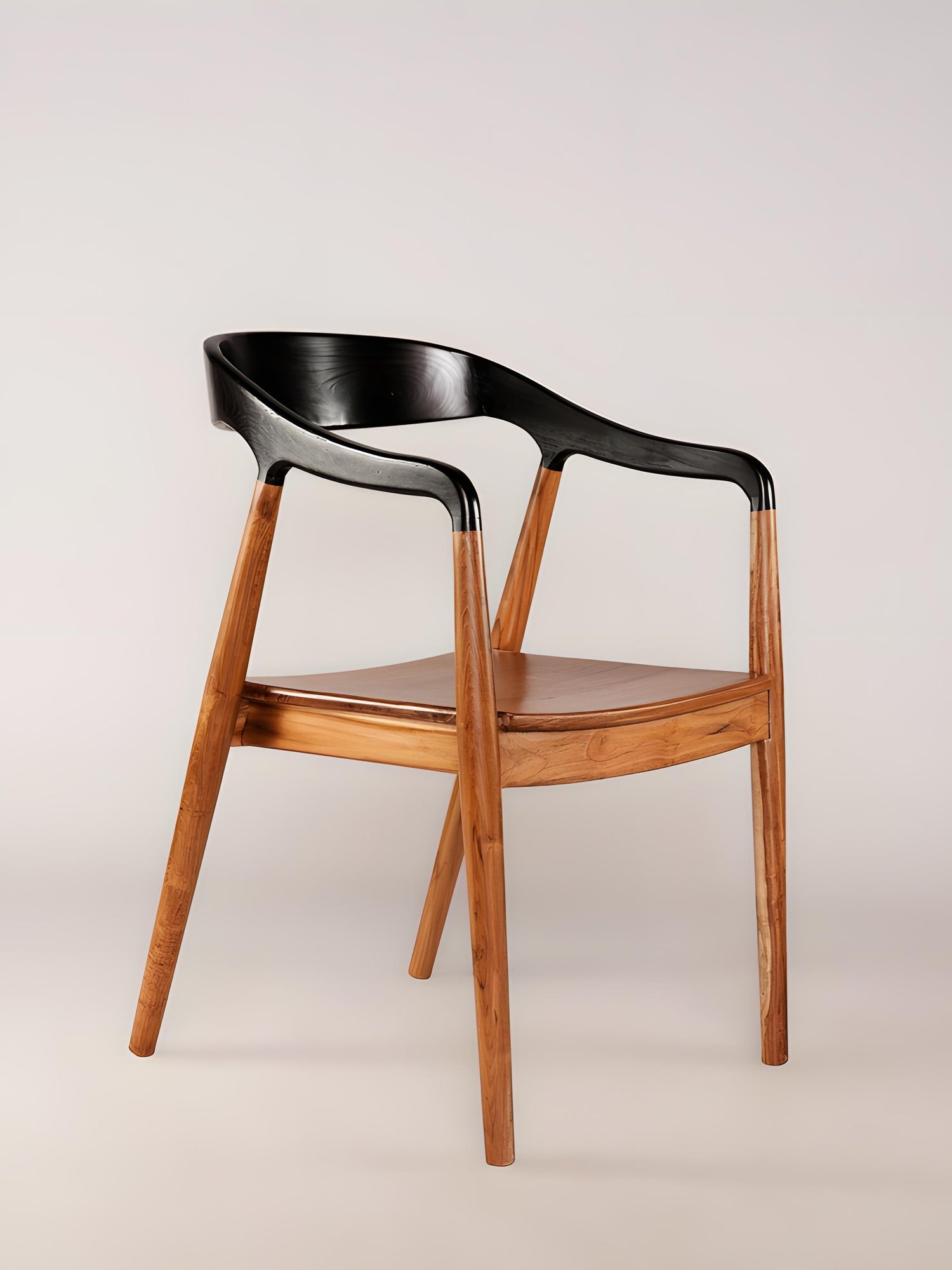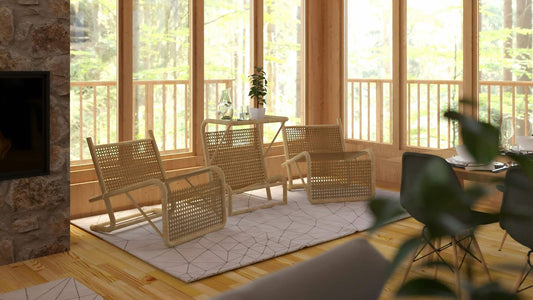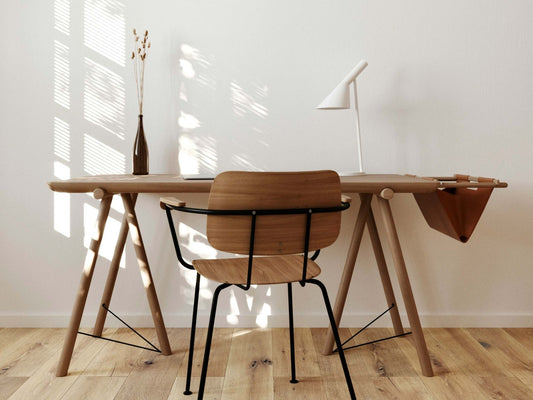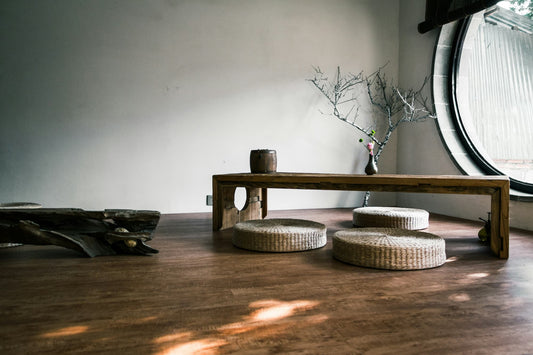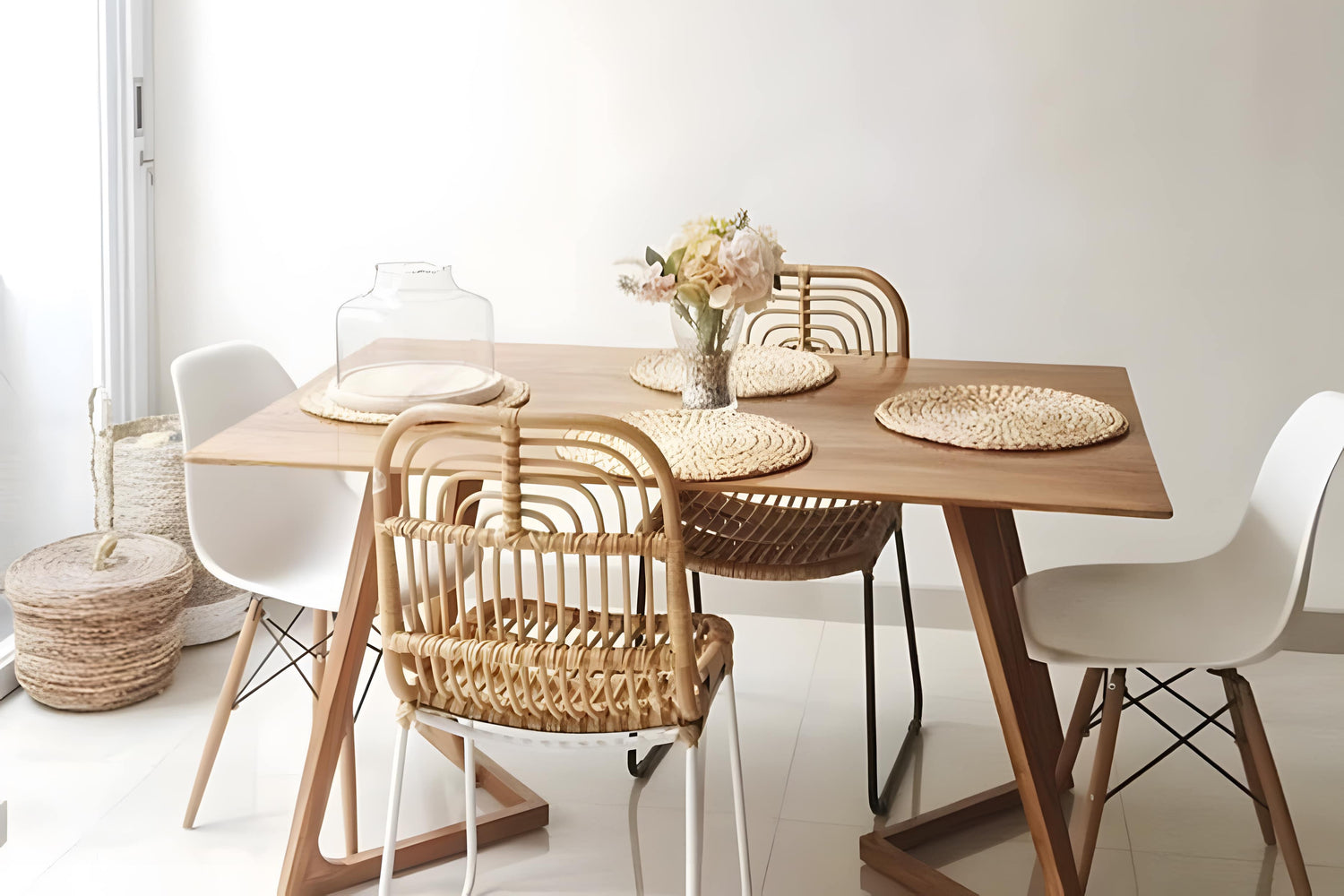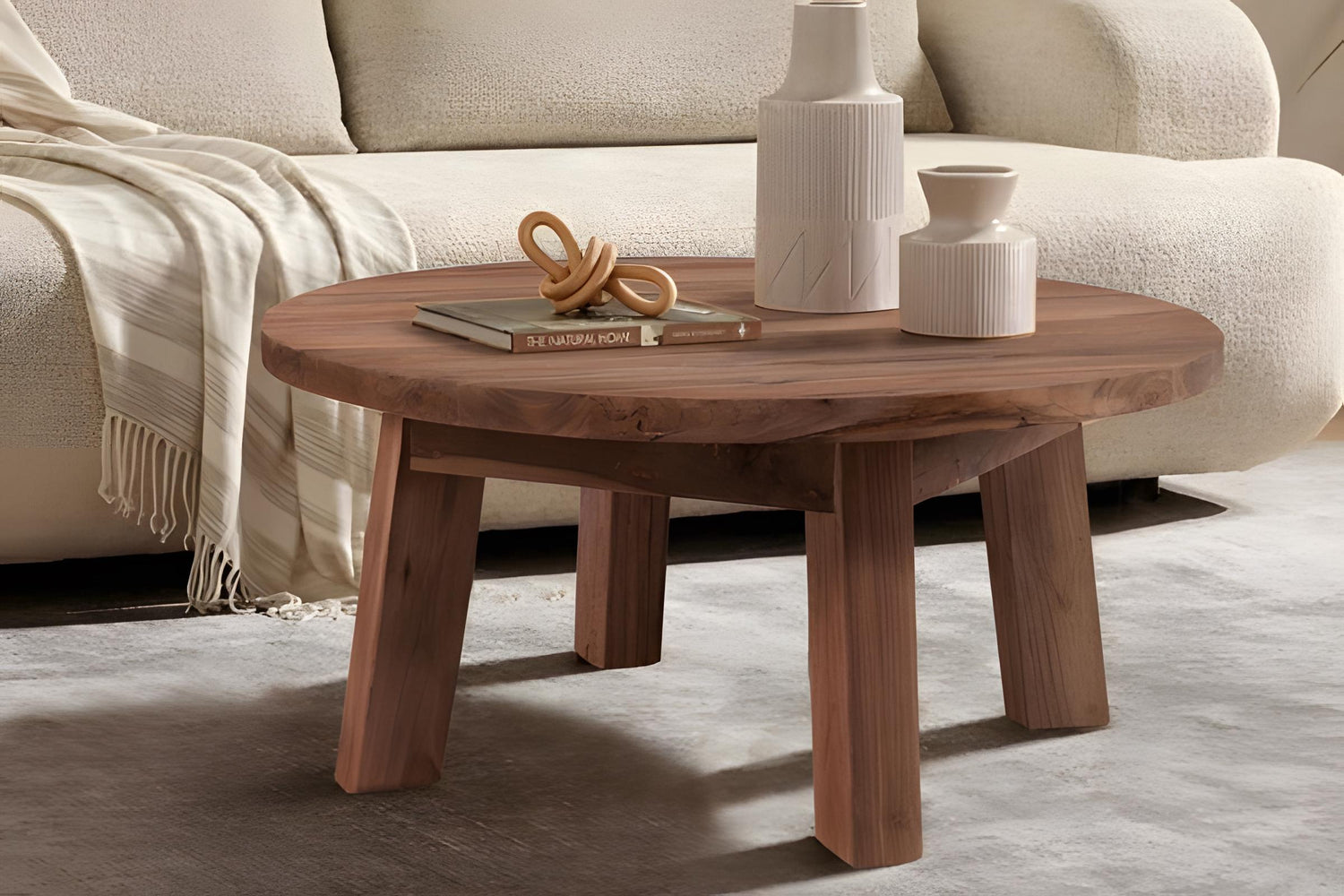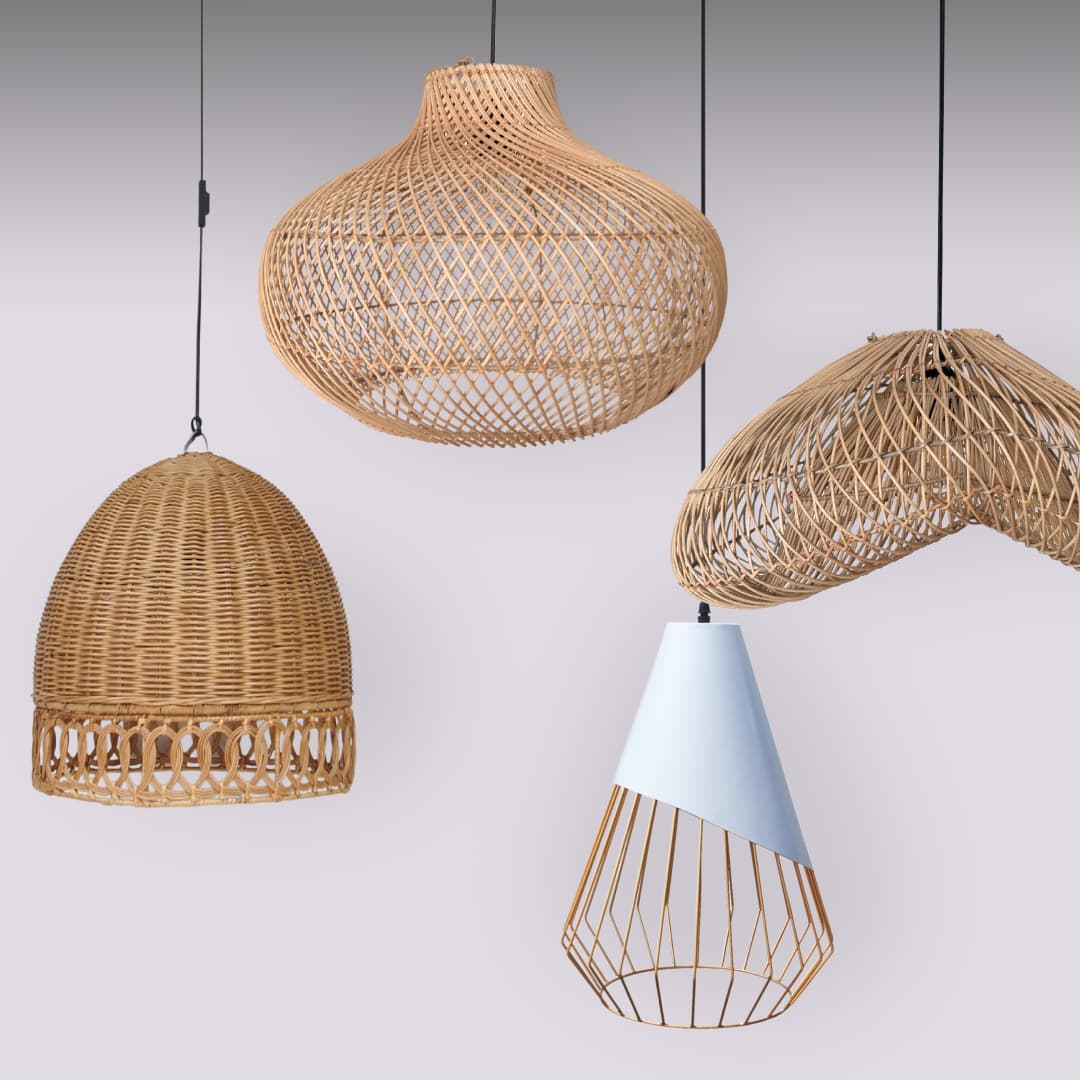When it comes to choosing furniture that feels both timeless and on-trend, natural materials like rattan, cane and wicker are hard to beat. But while these terms are often used interchangeably, they actually mean different things. Knowing what sets them apart can help you pick the right pieces for your space – whether you're looking for sturdy rattan dining chairs, decorative cane furniture, or cosy wicker lamp shades.
So, what exactly is rattan?
Rattan is a fast-growing, vine-like plant found in tropical regions of Southeast Asia. It’s strong, flexible, and harvested in a way that doesn't damage the forest, making it a great sustainable furniture option. Because of its solid core, it’s perfect for crafting frames that hold up over time.
There are different grades of rattan, including high-grade rattan known for its tight, smooth grain and durability, and lower-grade rattan, which may show more blemishes or irregularities.
Its natural look—usually honey-toned with subtle variations—brings a cosy, organic feel into your home. Whether you're after a modern or rustic vibe, rattan tends to blend in beautifully with everything from minimalist wood furniture to bohemian textiles.
Related post: Rattan Furniture: A Sustainable and Stylish Choice
Cane: The Outer Skin of Rattan
Cane is actually part of the rattan plant—the outer skin, to be exact. Once the rattan is stripped, that skin is peeled into thin strips and woven into patterns. That's cane.
Cane is most often woven into patterns like the classic six-way open weave (often called "Vienna weave"), close weave (a denser look), or more modern hexagonal and herringbone styles. These cane panels are typically attached to furniture frames using grooves and spline systems or stapled and covered for a seamless finish.
You’ll often spot it in the backs of cane dining chairs or cabinet doors. It’s lighter and a bit more delicate than solid rattan, and it adds that breezy, open-weave touch to furniture without making it feel bulky. Cane furniture is perfect for adding detail and airiness to your space.
Wicker: A Weaving Technique, Not a Material
Wicker isn’t a material at all—it's a technique. When you hear someone say "wicker chair," they’re talking about the way it’s woven, not what it’s made of. Wicker weaving can be done using rattan, bamboo, reed or even synthetic fibres.
Synthetic wicker, often made from resin or polyethylene, is popular in outdoor furniture due to its resistance to moisture and UV rays. While durable and weatherproof, synthetic wicker lacks the unique charm and organic warmth of natural wicker and is less sustainable.
That airy, woven texture you see on rattan lounge chairs or wicker lamp shades? That’s thanks to wicker craftsmanship. It gives furniture a hand-crafted, tactile feel that’s both stylish and nostalgic.

What Interior Styles Do These Materials Suit?
Each of these natural furniture materials brings a distinct aesthetic to your home. Here’s how they work with popular UK interior styles:
Rattan in Bohemian and Coastal Homes
Rattan furniture fits seamlessly into boho and coastal-style homes. Think relaxed, breezy spaces filled with light wood tones, linen fabrics, and plenty of greenery. A rattan dining chair or lounge piece brings casual charm and grounding texture.

Cane in Mid-Century Modern Interiors
Cane furniture adds a refined touch to mid-century and modern interiors. Its lightweight weave and intricate patterns pair beautifully with clean lines, tapered legs and warm timbers—making it a favourite in retro revival homes.

Wicker in Cottagecore and Farmhouse Homes
Wicker furniture is ideal for cottagecore, vintage and farmhouse interiors. It adds nostalgic charm and a handmade feel. Wicker lamp shades, storage baskets or accent chairs work beautifully with soft palettes and layered, lived-in looks.

Mixing Natural Weaves in One Room
Rattan, cane and wicker can be layered in a single space for a beautifully curated, cohesive feel. Try combining a rattan chair, a cane-front cabinet, and a wicker lampshade—just keep the colour palette neutral and cohesive. Natural materials love natural company.

Care and Maintenance Tips
To keep your rattan, cane, and wicker furniture looking its best:
- Dust regularly with a soft cloth or vacuum brush to remove dirt from crevices.
- Wipe gently with a damp (not wet) cloth if needed, and always dry immediately.
- Avoid prolonged direct sunlight to prevent fading and brittleness.
- Keep away from moisture and humidity, which can cause warping or mildew.
- Rotate usage on cane seating to ensure even wear and prevent sagging.
With minimal care, these natural materials can stay beautiful for decades.
Final Thoughts
So there you have it—rattan, cane and wicker furniture might sound similar, but each plays a unique role in shaping your home. Rattan offers strength and structure, cane lends airy elegance, and wicker adds artisanal texture.
Whether you’re drawn to the laid-back charm of coastal furniture or the natural warmth of bohemian furniture, choosing pieces made with these materials will bring depth, texture, and calm into your space.
Rattan furniture has become a go-to choice for UK homeowners who want to add a natural, laid-back feel to their interiors. From handwoven dining chairs to breezy lounge seating and beautiful lamp shades, rattan brings character and warmth into your everyday spaces.
At Mellowdays, we craft our rattan furniture with care, using time-honoured techniques and sustainably sourced materials. If you're ready to bring a little more calm and character into your space, take a look at our full rattan collection.
